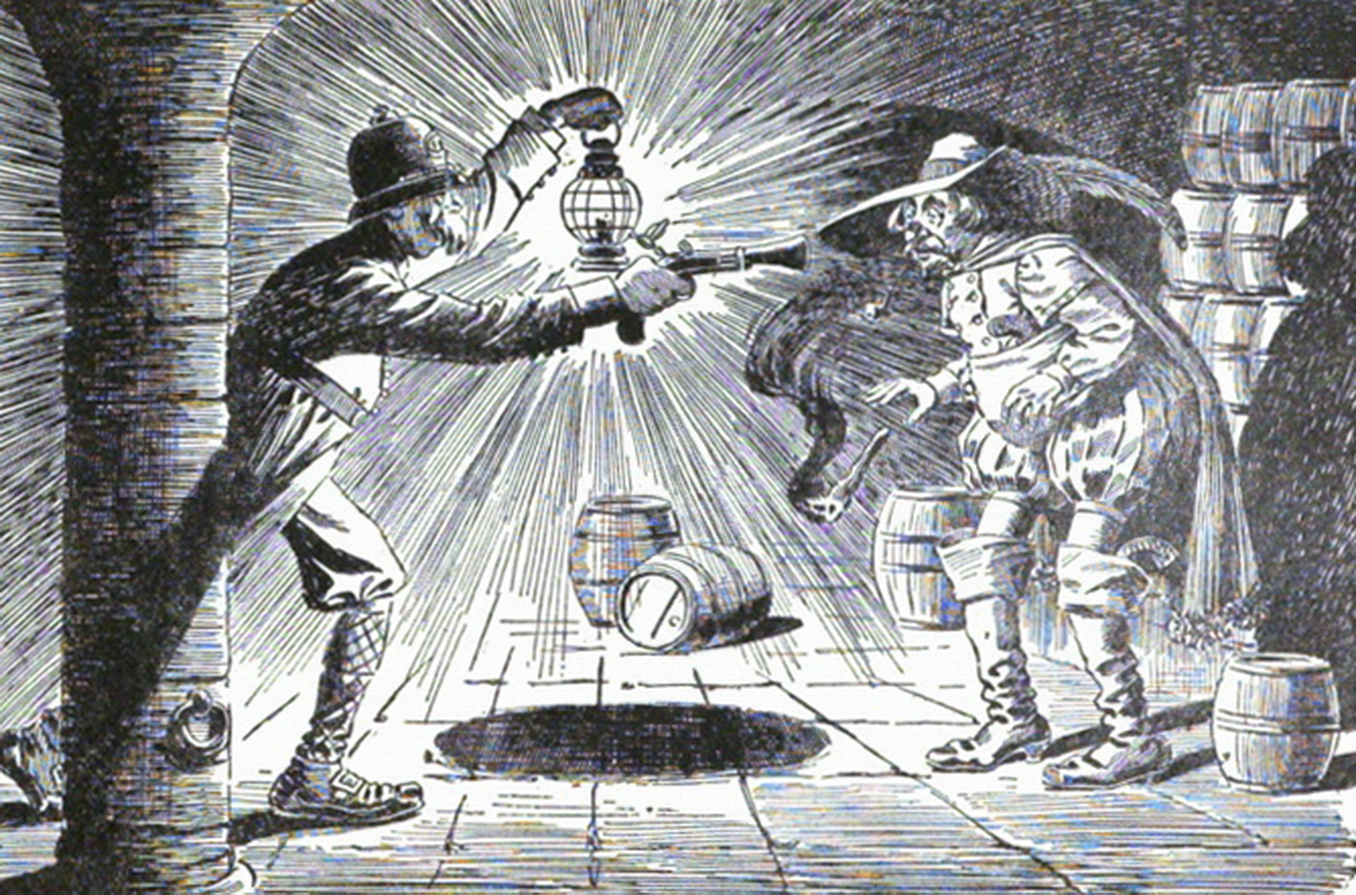The Gunpowder Plot
Catesby had a house in Lambeth, on the opposite bank of the River Thames from Parliament. Keyes's job was to take charge of the gunpowder once it arrived in Catesby's house. The plan was to use boats to transport the gunpowder barrels across the Thames and hide them underneath the House of Lords, in a tunnel that was being dug to Parliament from a nearby house. The targeted date was February 1605, the planned reopening of Parliament. The government delayed, however, citing fears of the ongoing plague, and the rescheduled date was October 3. This delay gave the plotters more time to organize their endeavors. They found illegal sources of gunpowder (for which the government had a monopoly on supply) and eventually managed to hide 36 barrels beneath Parliament. That would have been more than enough, experts have concluded, to dismantle the building housing the House of Lords and kill many people there and in the surrounding. It wasn't just the upper house of Parliament that was the target. Also planning to be there on the day of re-opening were King James and others of his government. The intention was to kill the king and as many of his advisors as possible, then put James's daughter Elizabeth on the throne. Elizabeth was a known Catholic, and the presumption was that she would be more sympathetic to people of her own religion than her father had been.
By this time, the plotters had abandoned the tunnel idea because it was taking too long and proving too risky. Instead, the plotters had used connections to rent a cellar much closer to the Parliament building; in fact, the cellar was so extensive that it extended beneath the Parliament building itself. The plotters eventually got the barrels of gunpowder into the cellar underneath Parliament and hid them under a giant pile of firewood, so it would look like something stored for the winter. It was left to Fawkes to set the barrels of gunpowder alight. He never got the chance because he was caught red-handed in the cellar on November 4, the day before the intended explosion. It was virtually unheard of to search the areas under Parliament. For a start, the number of underground areas and hiding places was high; the government did not have the manpower to do regular searches of such places. Robert Cecil, one of James's chief advisors, ordered the search after a series of seemingly chance events. Francis Tresham, one of the last to join the plot, had written a letter to his cousin, Lord Monteagle, urging him to stay away from the re-opening of Parliament because the government would "receive a terrible blow" on that day. Monteagle got the letter on October 26 and went to Cecil, who eventually ordered the search that found Fawkes. 
Fawkes was actually found twice, by two separate search parties. The first time, he passed himself off as a servant who was carrying firewood to his master, whom he named as Thomas Percy; the search party let him go. Once the search party reported this exchange to their leader, however, another search was carried out and this time the searchers again found Fawkes, this time saying his name was John Johnson and this time carrying a pocket watch, a lantern, some matches, and a collection of firestarter. More importantly, close by they found hidden the 36 barrels of gunpowder. They immediately arrested Fawkes. After hearing of Fawkes's arrest, most of the rest of the plotters fled. Catesby and a few others tried to make a stand; Catesby was among those killed in a shootout. In all, eight of the 13 plotters were rounded up. They were tried in January 27, 1606; after their conviction, they were sentenced to death and then killed. A wave of sentiment for the King followed. In celebration of the foiling of the Gunpowder Plot, King James ordered celebrations, including the setting of bonfires and the lighting of fireworks. Not long after, November 5 was declared a day of celebration, known as Bonfire Night. Other names for this celebration through the years have included Fireworks Night and Guy Fawkes Night. The events of the Gunpowder Plot have also been distilled in a children's nursery rhyme, the first verse of which is this: Remember, remember, Bonfire Night is celebrated to this day, in the United Kingdom and in other nations that were once British colonies. The nursery rhyme is still recited. And to this day, investigators conduct a full search of the cellars beneath the Houses of Parliament the day before each new session of government. |
|



 The plague lingered, and the government against postponed the opening of Parliament, this time to November 5. Meanwhile, the numbers of plotters grew, to 13 in all, with the addition of Ambrose Rookwood, Everard Digby, and Francis Tresham.
The plague lingered, and the government against postponed the opening of Parliament, this time to November 5. Meanwhile, the numbers of plotters grew, to 13 in all, with the addition of Ambrose Rookwood, Everard Digby, and Francis Tresham.
